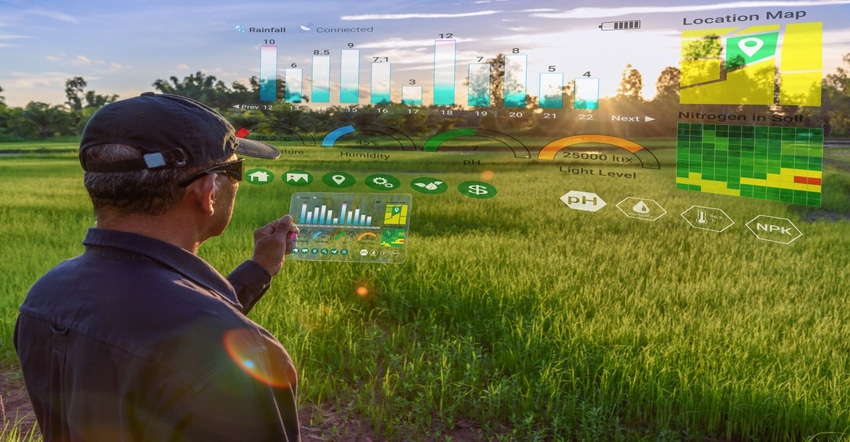How does industry continue to make food and beverage that is better for consumers while also ensuring it’s better and more sustainable for the planet?

That was the major question lingering over July’s Institute of Food Technologists (IFT) FIRST digital event. FIRST (Food Improved by Research, Science and Technology) included more than 100 scientific sessions and thought-provoking keynotes, with the themes of planetary sustainability and the global hunger crisis serving as a through line over the course of the five-day event.
The idea of sustainability covers many areas—some obvious, others less so. Keynote speaker Ertharin Cousin, former executive director of the United Nations World Food Programme (WFP) and U.S. ambassador to the UN Agencies for Food and Agriculture in Rome, discussed the issue of world hunger with her talk, “Zero Hunger: Will We Ever Get There?”
According to Cousin, nearly 700 million people around the world lack the food, water or other resources to properly sustain themselves. Up to 3 billion people globally don’t have access to a healthy meal with adequate vitamins, minerals and other nutrients. To make matters worse, Cousin made clear lack of resources is not the key issue; indeed, almost 40% of global food cultivated is wasted, amounting to some $700 billion annually.
Still, she said, “At the end of the day, zero hunger is possible.”
However, in order to achieve what she believes is possible, major changes must be made throughout the food system—which she says plays a double-edged role in achieving true sustainability. On the one hand, the food system is extremely vulnerable to today’s climate crisis.
“Climatologists tell us that our food system is potentially the first breakdown of systems that we will witness as a global community from our changing climate and the climate crisis,” Cousin said.
On the other hand is what Cousin called an “inextricable paradox” between agriculture as a victim of the climate crisis—and its role as a contributor. Nearly 70% of all water usage globally goes toward the food system. Land cultivation for agriculture has detrimental effects on local biodiversity. And 35-40% of all greenhouse gas emissions are tied to the global food system. The COVID-19 pandemic, she said, only served to illuminate these issues.
Despite all this, Cousin remains hopeful—and determined. She cited three major efforts needed to achieve zero hunger on a global level:
First, industry must reverse current course through research and innovation. From limiting water use to creating better crop storage options for underdeveloped countries, research and innovation in the realm of food science and technology is a must to achieve zero hunger.
This idea of science and innovation being the key to a more stable and sustainable food system was also on display during the panel discussion, “Agriculture Innovations Driving the Future of Food Stability,” where technology was described as a sort of business partner farmers could rely on.
“Technology and data and analytics are absolutely our partner in the [research and development space],” said Kelly Gillespie, Ph.D., R&D, corn and soy crop efficiency portfolio manager, Bayer Corp. Science. “Humans no longer have to work through all the variables and make the selections ourselves.”
Improved technology can also help combat the effects of greenhouse gas emissions, explained Meagan Keiser, chief operating officer, Perry Agricultural Lab.
“I can pull out my phone and see every vehicle on our farm and what the fuel efficiency level was. I can take my entire fuel usage and see what my greenhouse gas emissions are. What am I going to do to minimize that next year?”
Second, the effort must be collaborative. “It is impossible for any one sector on its own to achieve these goals,” Cousin said. Everyone from farmers to manufacturers, consumers to governments, scientists to finished goods brands must buy in; sustainability on a global scale can only be achieved when every link in the complicated chain works together.
And finally, cited Cousin, is food as health. This means not just access to nutritious foods for developing countries, but affordable access to healthier foods in developed countries where health crises such as obesity and diabetes are rampant.
“If we want to address the issue of malnutrition, especially in Africa,” said Gladys M. T. Sampson, general manager, Premium Foods Ltd., during another panel discussion, “then food science should have a major role to play. How do we combine our local staples to be able to meet the micronutrient deficiencies of our consuming public? That’s where we need the food scientists to come on board.”
Technology is an ever-changing landscape. The issues of global hunger and planetary sustainability are massive. But, with concerted, collaborative effort through every step of the supply chain, technology can serve as a partner to help industry achieve its lofty—but necessary—goals.
About the Author(s)
You May Also Like






